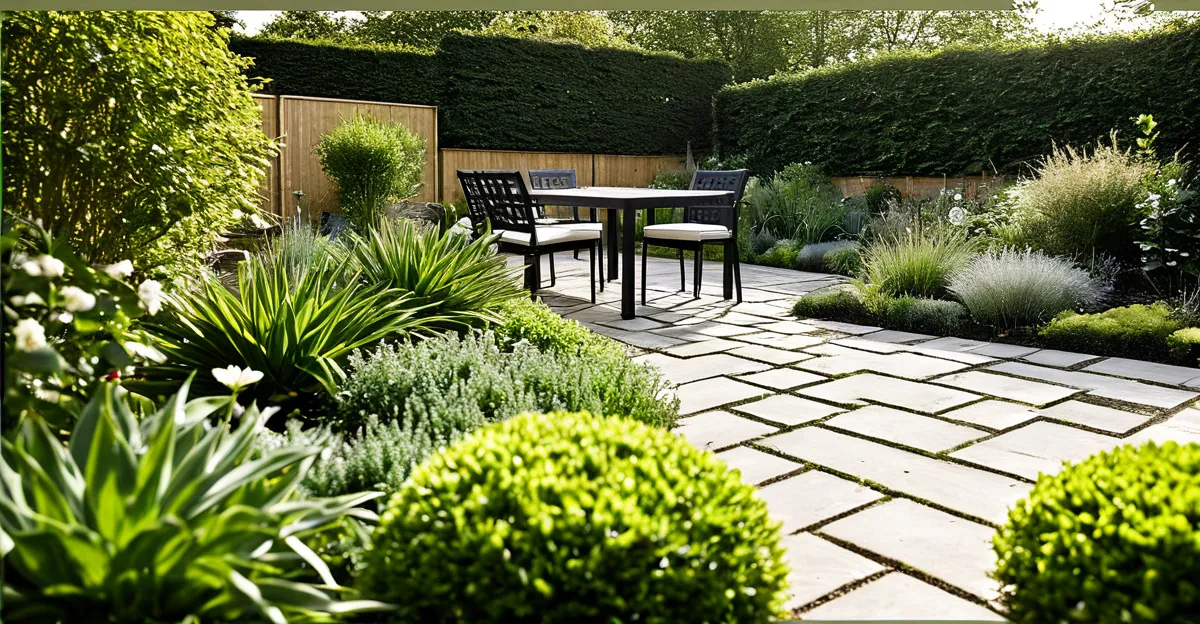Essential Principles for Designing a Low-Maintenance UK Garden
Creating a low-maintenance garden design begins with a solid structure that naturally reduces ongoing work. Prioritising strong garden architecture—such as clear paths, defined beds, and practical zones—helps minimise labour. This approach supports easy garden care by cutting down on unnecessary upkeep tasks like frequent trimming or reshaping.
Selecting the right materials and features is vital. Opt for maintenance-reducing materials like gravel or paving over turf to limit mowing and watering. Incorporating weed barriers and quality mulch further suppresses weeds, lowering daily garden chores.
In the same genre : How can you create an eco-friendly garden in your UK backyard?
Understanding the unique UK climate shapes every choice. Gardens here face variable rainfall, cooler temperatures, and occasional harsh weather. When you align design elements with these conditions, plants prosper with less intervention, and materials endure longer. For example, choosing weather-resistant furniture and durable surfaces ensures less repair and replacement.
By focusing on solid structure, sensible materials, and climate-appropriate choices, you lay the groundwork for a garden designed for ease. These essential principles underpin any effective low-maintenance garden in the UK, blending beauty with practicality and freeing you from constant upkeep demands.
Also to read : How can you enhance natural lighting in your UK home?
Choosing Plants That Thrive with Minimal Care
Selecting the right low-maintenance plants UK is key for a garden that stays healthy with less effort. Hardy garden plants, such as native perennials and tough shrubs, require minimal watering and pruning, making them ideal for easy garden care. Drought-tolerant UK plants, including lavender, sedum, and ferns, adapt well to changing rainfall patterns, reducing the need for constant attention.
Why choose perennials and shrubs? These plants come back year after year, saving time on replanting and ensuring consistent garden structure. Groundcovers, like creeping thyme or ajuga, fill gaps, suppress weeds, and limit soil erosion, decreasing upkeep tasks. Avoiding high-maintenance or invasive species prevents excessive growth management and the risk of these plants overwhelming your garden.
Incorporating a mix of these resilient plant types ensures your garden flourishes under typical UK weather with manageable watering, feeding, and trimming. Such choices complement a low-maintenance garden design by reducing labour while enhancing year-round interest and colour. Thus, understanding the specific plant qualities and local growing conditions is essential for successful UK garden tips and easy garden care.
Simplifying Garden Layouts and Features
A well-planned garden layout is crucial for truly easy garden care. Using bold, simple shapes in your garden design reduces complexity, making maintenance quicker and less frequent. Straight or gently curved paths in garden planning UK are easier to navigate and maintain than intricate winding routes, cutting down on trimming and edging effort.
Reducing lawn area is a practical strategy. Traditional lawns demand regular mowing and watering, so replacing some turf with gravel or paved paths lessens upkeep considerably. This approach not only saves time but also enhances durability in varied UK weather conditions where damp or shaded lawns struggle.
Incorporating raised beds and containers adds manageable gardening zones well-suited to low-maintenance garden design. These features limit weed spread and soil compaction while simplifying watering and harvesting. Plus, they provide flexibility to adapt planting each season without major disruption.
By focusing on clear, simple garden layout ideas combined with practical features, UK gardeners can enjoy a tidy space with minimal fuss. The right design supports efficient maintenance routines, preserves garden health, and keeps overall effort low, perfectly matching the goals of easy garden care.
Materials and Techniques to Reduce Ongoing Work
Choosing the right materials is vital for a successful low-maintenance garden design. Using maintenance-reducing materials like gravel, paving, or decking instead of traditional lawns significantly cuts down on mowing, watering, and general upkeep. Gravel paths not only offer good drainage—essential for the often wet UK climate—but also limit weed growth when combined with effective weed control methods.
Speaking of which, weed control is a cornerstone of easy garden care. Employing garden mulch UK properly suppresses unwanted growth by blocking sunlight and retaining moisture. Mulch also enriches soil health and reduces the need for frequent watering. Installing weed barriers beneath mulch or gravel adds another layer of defence, making it harder for weeds to establish.
Durability matters too. Selecting weather-resistant materials for outdoor furniture, garden edging, and surfaces helps prevent damage from UK’s variable conditions like rain, frost, and wind. The right choices here mean less frequent repair or replacement, all contributing to a garden that stays attractive and functional with minimal ongoing effort.
Low-Maintenance Lawn Alternatives
Choosing effective lawn alternatives UK is essential for those aiming to reduce mowing and watering, which are often time-consuming parts of garden maintenance. One popular option is artificial grass, which provides a lush, green appearance year-round without the need for traditional lawn care like cutting or feeding. It’s ideal for busy gardeners seeking easy lawn care solutions, though installation requires some initial investment and ground preparation.
Another smart choice is clover lawns, combining beauty with ecology. Clover needs less watering and mowing than standard grass, fixes nitrogen in the soil naturally, and stays green even in dry spells. These qualities make it a sustainable pick aligned with UK garden tips for low input.
Meadow planting offers a more naturalistic approach, featuring wildflowers and native grasses that flourish with minimal intervention. This alternative supports biodiversity while dramatically cutting watering and mowing demands.
Blending these lawn alternatives UK with functional spaces retains garden usability without sacrificing ease of maintenance. Choosing the right mix depends on your garden’s style, size, and daily use, helping you create a practical, attractive space that fits your lifestyle perfectly.




